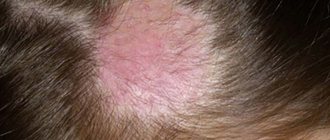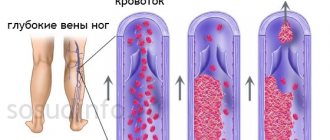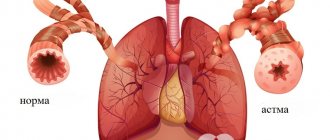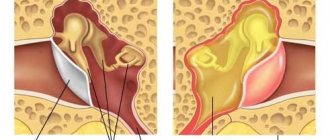What to do if your baby cannot tolerate breast milk? Should I really give up breastfeeding? Or is there still a way out?
Lactase deficiency (lactose intolerance) is a disease whose main symptom is impaired absorption of dairy products. The disease is diagnosed from the first months of life, because at this age breast milk is the main food product of the child. It must be remembered that the severity of symptoms increases as the amount of milk consumed increases. Lactose intolerance can also occur in adults.
Lactase is an enzyme synthesized by enterocyte cells of the intestine. The main function of this enzyme is the breakdown of lactose, the main constituent of any milk. Lactase, breaking down lactose, converts it into simpler sugars: glucose and galactose, which are then absorbed through the intestinal wall. If there is not enough lactase, or there is none at all, then lactose is not broken down in the intestines. It promotes the accumulation of water in it and the development of diarrhea - loose stools.
Lactase deficiency can be primary or secondary.
In primary deficiency, lactase is secreted in sufficient quantities by healthy intestinal cells, but the activity of the enzyme is reduced, so lactose remains undigested. Primary lactase deficiency, in which the production of the enzyme is impaired, is very rare. There is a so-called transient lactase deficiency. It is typical for premature and full-term but immature babies. This is explained by the fact that high enzyme activity is needed only at the time of birth, therefore, starting to increase from 34 weeks of pregnancy, lactase activity reaches a maximum at 37-39 weeks. It is for this reason that a premature baby may have lactose intolerance, which, being transient, goes away after some time.
Secondary lactase deficiency occurs when enterocytes are damaged, which is characterized by impaired lactase secretion. Most often, cell dysfunction is caused by various types of inflammation in the intestines (including allergic ones).
What is lactase deficiency?
Lectase deficiency is considered a malabsorption syndrome caused by intolerance to the lysaccharide lactose. This pathology is quite common among the population; from 10 to 80% of residents of certain regions have this diagnosis.
Lactase deficiency is extremely dangerous for children in the first years of life. This is due to the fact that lactose is found in mother’s milk and is often the basis of nutrition for children. Breastfeeding is preferable in the first year of life, but it is impossible to ensure such a condition in case of lactase deficiency. The problem of such a disorder is an open issue considered in pediatrics and gastroenterology. The answer to this question has not been found.
In modern medical practice, pathologies of the following types are distinguished:
- alactasia;
- disaccharide intolerance;
- hypolactasia;
- transient lactase deficiency of premature infants;
- adult-type hypolactasia;
- transient lactase deficiency;
- secondary lactase deficiency with damage to enterocytes.
Considering the severity of enzyme deficiency, it is worth noting that there is:
- alactasia – absolute absence of the enzyme;
- gmpolactasia – partial decrease in enzyme activity.
According to the nature of the disease, it can be transient or persistent.
In modern medical practice, the following types of lactose intolerance are distinguished:
- Congenital. After birth, the child rapidly loses weight, dehydration is often observed, the main danger is the rapid deterioration of his health - there is a risk of death. An intestinal biopsy helps to accurately confirm the diagnosis, but such a diagnostic measure is used extremely rarely in pediatric practice. The child is transferred to a lactose-free diet for several months, after which lactose is introduced into the menu in small quantities.
- Transient - manifests itself in children born prematurely.
- Primary – develops at the end of the breastfeeding process. Pathology of this form is quite common in Asia and Africa, as well as in countries located on the African continent. This feature directly depends on the nutritional habits of people. In this case, the pathology is manifested by symptoms such as bloating, nausea, belching, and stomach pain.
- Secondary - manifests itself when the intestines are damaged by various damaging factors. The pathology is eliminated after achieving sufficient compensation for the underlying disease. The rehabilitation period for gastroduodenitis and other common pathologies ranges from 1 to 3 weeks.
- Functional disorder. The disease develops in a child who gains weight in the required amount. The child may suffer from gas formation, and his stool often turns green. The reason for the development of pathology is the lack of nutritious milk or the use of insufficient concentrations of the formula.
Lactase deficiency can be complete or partial.
Symptoms of lactase deficiency
The body can signal that milk cannot be digested in different ways, depending on how much lactase it manages to create. The lower the amount, the more severe the symptoms. Milk indigestion can be observed 30 minutes and up to two hours after consuming a dairy product. Symptoms characteristic of lactase deficiency in a child:
- loose stools - lactose contained in milk is not able to overcome the intestinal wall to enter the bloodstream and, remaining in the intestines, retains water, which leads to diarrhea;
- stomach cramps - since lactose does not decompose, remains intact and absorbs large amounts of water, the accumulation of fluid stimulates intestinal motility, causing rhythmic contractions;
- excessive production of intestinal gases - undigested lactose, once in the large intestine, undergoes anaerobic fermentation and the production of organic substances, mainly lactic acid. They produce large amounts of gas, mainly carbon dioxide;
- bloating;
- nausea and vomiting;
- cramps, abdominal pain;
- rumbling in the stomach.
Symptoms usually disappear within a few hours.
You may be interested in:
Lactase deficiency in infants symptoms
Lactase deficiency in newborns
Lactose intolerance: symptoms
Intestinal obstruction in a child
Lactase deficiency
Attention!
Lactose intolerance manifests itself in different ways in children. Some people only experience discomfort when consuming large amounts of milk; for others, a small portion may cause symptoms. It also happens that a person does not suspect a problem until he includes a large amount of dairy products in his diet.
Features of lactase deficiency in infants
Lactase deficiency in newborns often develops as a result of a hereditary predisposition. This feature is in most cases detected in carriers of Asian genes. In children under 6 months of age, pathology can manifest itself due to various intestinal lesions due to infection and allergies.
Pediatricians also notice that children born prematurely are more likely to experience this pathology. In this case, the disorder can be traced in the first month of the child’s life.
Lactase deficiency is quite dangerous for newborns. This is due to the fact that milk, which is the only food during this period, is a forbidden product. The only nutritional option for such children is to switch to artificial feeding using a lactose-free formula. It is recommended to follow a similar diet for 4 months. After which milk in small quantities can be introduced into the child’s diet.
Symptoms in adults
First of all, it is worth noting that symptoms in adults have mild signs of lactase deficiency, so the patient often attributes the pain to other ailments: gastritis, ulcers, etc.
So, the symptoms of the disease characteristic of an adult organism have the following features:
- Immediately after consuming dairy products, increased gas formation, tingling in the abdomen and rumbling are observed for an hour.
- Over time, gas formation increases, and mild signs of painful cramps are observed in the abdomen.
- If a small amount of dairy products was eaten, then after 3-4 hours the symptoms of the disease disappear on their own. In rare cases, severe pain may occur; in this case, the use of therapeutic and medicinal measures cannot be avoided. But often treatment is not required in adults.
In the case of congenital deficiency, a person will experience these symptoms periodically throughout his life. To reduce the effect of painful signs of the disease, it is necessary to stop consuming dairy products or reduce them to a minimum.
Features of lactase deficiency in children
In some cases, lactase deficiency can be detected in children aged 9 to 12 years. In this case, the development of the disease is associated with a decrease in the concentration of lactase in the body. This change is due to the fact that children do not receive breast milk and the amount of element in the body is constantly decreasing. It is worth remembering that such a change is also a pathology. Normally, the substance should be produced in the body until old age.
Many children over 7 years of age face this pathology. This pathology is not dangerous for adolescents. To prevent the appearance of unpleasant symptoms of the disease - perhaps for this you need to stop eating dairy products. In most cases, such restrictions are not critical.
What not to eat if you are lactose intolerant
Everything is individual. The need to completely abandon dairy products, as the main carrier of lactose, arises very rarely. In most cases, it is enough to give up whole (sweet) milk, but you can freely eat fermented milk products, cream and butter. Sometimes the body is hostile to a large amount of “milk”, but 50-100 ml. milk a day does not react in any way. In such cases, you can safely add milk to your coffee and allow yourself one serving of ice cream once a week.
When choosing dairy products, focus on fat content. The fattier the product, the less lactose it contains. For example, everyone can eat butter. It contains a large amount of fat (up to 83%) and practically no protein or carbohydrates.
It is better to take butter with the highest fat content, it contains the least lactose
From fermented milk products, choose those that contain live lactic acid bacteria - they will help restore normal acidity and “useful” intestinal microflora. Prefer mature hard varieties to soft young cheeses. The longer the cheese matures, the less lactose it contains.
Hard cheeses contain less lactose, and the Dzhugas cheese in the photo does not contain lactose at all
Most lactose is found in whole milk and its concentrates. Fermented milk products contain little lactose because it is broken down by lactic acid bacteria when the milk is fermented.
The first signs of lactase deficiency
Various symptoms may indicate the development of lactase deficiency in a child. The doctor will be able to compare the clinical picture data and confirm the diagnosis after a complete examination. The development of a disorder in a child may be indicated by the following symptoms, for example, bloating, frequent colic in the intestines, dilution of stool and the appearance of foamy mass in the stool. Children with lactase deficiency behave quite agitatedly before and after feeding; after eating, the child often burps. With a complicated course of the pathology, weak weight gain is observed. It is worth understanding that such a pathology is quite difficult. In some cases, an unfavorable outcome of the pathology is likely, there is a risk of developing anemia, and in some cases, death is possible. Do not underestimate the danger of a violation; if alarming symptoms appear, you should seek help from a specialist.
With primary lactase deficiency, the disease may not manifest itself during the first weeks after the birth of the newborn. After a few weeks, active flatulence appears, and the child becomes more restless due to colic. The fact of the development of pathology is confirmed by liquid feces.
When overdosing with lactose, various digestive disorders can occur, namely:
- stool turns green;
- feces have a yeasty odor;
- the child becomes extremely restless and sleeps poorly due to abdominal pain.
The manifestation of any of the listed signs or their combination in a child should indicate the need to contact a specialist. Taking any action on your own is not recommended; incompetent decisions can cause the pathological process to worsen.
Forecast
Patients with hereditary lactase deficiency must follow a low-lactose diet and/or take lactase supplements throughout their lives.
Transient lactase deficiency in premature infants usually goes away by the third or fourth month of life, which is explained by the maturation of the body's enzyme systems.
After relief of the underlying disease of the small intestine, signs of secondary lactase deficiency are eliminated independently.
Lactase deficiency is more often diagnosed in premature infants, since lactase activity increases in the last weeks of intrauterine development of the fetus and reaches a maximum by the 39-40th week of gestation.
Children with lactase deficiency should be monitored by a gastroenterologist and pediatrician. The criteria for effective therapy are:
- disappearance of dyspeptic syndrome;
- decreased content of carbohydrates in feces;
- age-appropriate psychomotor development;
- weight gain corresponding to the age norm.
Symptoms of lactase deficiency
The main symptoms of lactase deficiency in children are various disorders in the functioning of the gastrointestinal tract. Symptoms of the disease can be detected even in a newborn. First of all, diarrhea appears; feces acquire an unusual color and foamy consistency. The act of defecation is accompanied by an attack of flatulence in the child. The child becomes restless and can only sleep at night in a prone position. Such disorders should be a cause for concern; you should immediately consult a doctor; such worries are associated with the risk of dehydration in the baby and other equally serious pathologies.
Diagnostics
A preliminary diagnosis of lactase deficiency is made based on the characteristic clinical picture. In the future, it must be confirmed by the results of laboratory studies and functional tests.
The dietary diagnostic method is widely used in clinical practice. The patient is prescribed a lactose-free diet, which leads to the cessation of diarrhea and elimination of flatulence. The introduction of dairy products into the diet contributes to the resumption of symptoms of the disease. Pay attention to the fact that after a lactose load, the concentration of methane and hydrogen in the exhaled air of patients increases, which can be detected using special laboratory tests.
In infants with lactase deficiency, a decrease in stool pH to 5.5 or less is determined, and in adults, a high lactose content is found in the stool.
Lactase deficiency in children is often combined with other pathological conditions (hyperactivity and attention deficit disorder, vitamin D deficiency rickets, convulsions, muscle hypotension).
Currently, the gold standard for diagnosing lactase deficiency in adults is the determination of lactase activity in a biopsy specimen of the small intestine. In pediatric practice, this method has not found widespread use due to its invasiveness and complexity.
In case of primary lactase deficiency, a genetic study - lactase genotyping - is indicated.
Treatment of lactase deficiency in infants
Breast milk intolerance that manifests itself in a newborn can be caused by a woman’s failure to follow healthy eating rules during pregnancy. The cause of the disease in a young child may be:
- During pregnancy and breastfeeding, a woman should extremely limit the amount of foods she consumes that contain gluten or traces of it. This compound may be present in various foods. Particular attention should be paid to the nutrition of a nursing mother in the 1st trimester of pregnancy and in the first month of breastfeeding.
- Synthetic additives, namely flavoring additives, flavor enhancers, dyes and flavors - such components have no place in the diet of a pregnant and nursing mother. The child’s unformed gastrointestinal tract is not able to perceive and digest such compounds, and therefore there is a risk of developing various disorders.
- Milk products. Goat and cow's milk are not suitable for feeding newborns and can cause lactase deficiency. In addition, such foods can provoke allergic reactions. If lactation is not possible, only adapted formulas can be used to feed the baby.
Therefore, we can conclude that the cause of lactase deficiency in a newborn may be the woman’s poor nutrition during pregnancy and breastfeeding. It is possible to solve this problem. You should start by contacting a specialist; the doctor will help you choose the best method and create a diet for a nursing mother.
Types of disease
First, it is worth noting that although the disease is called lactase deficiency, it mainly comes from the word lactase, since the main reason for the formation of the disease is the reduced composition of this particular enzyme.
The disease is divided into types, which have characteristic features. These types have the following names:
- Primary deficiency is a very rare disease, the cause of which is the genetic characteristics of the baby. In this case, lactase is formed by the body in reduced quantities, and sometimes is not produced at all. If the primary deficiency disease is not treated, the child may eventually die. But it is worth noting that this type of illness is quite rare.
- Secondary failure is formed due to a disease of the intestinal walls, which is provoked by infection entering the cavity. Secondary deficiency can occur due to an allergy to milk. Thus, the primary symptom of the disease initially appears - allergy, and behind it a secondary factor is formed - the disease of lactase deficiency. Thus, this species arises primarily from the primary causative agents of the disease.
- Functional . Its peculiarity is that enzymes are produced in full quantities, but they do not have time to process lactose. This occurs due to the low fat content of milk; in this case, food passes through the intestines quickly enough and the body does not have time to break down lactose into its components.
- Deficiency in adults . As the name suggests, this species occurs primarily in adults. The cause of the disease in adults is an age-related change in the amount of enzymes that are produced by the intestinal mucosa. In this case, in adults, this form manifests itself in the form of mucus in the feces.
Of all the types of disease presented above, the most dangerous is the primary form, but, fortunately, it is very rare.
Treatment of lactase deficiency in children
When primary lactase deficiency develops, treatment begins with reducing the amount of lactase consumed by the child. In especially severe cases, it is completely excluded from the child’s daily diet. At the same time, therapeutic actions should be aimed at restoring the functioning of the gastrointestinal tract and eliminating dangerous symptoms of the pathological process.
In case of secondary failure, the main therapeutic manipulations are aimed at treating the pathology that provoked the development of the problem. Parents should remember that it is not necessary to completely remove lactase from the menu; it is enough to significantly reduce the amount of its consumption.
Whole cow's milk should be completely removed from the child's daily diet, but fermented milk products and hard cheeses may be present in the diet. When preparing a diet, it is worth considering that the child will not receive enough calcium in such conditions; this valuable microelement must be introduced into the diet additionally with vitamin complexes. After changing the usual diet, a laboratory examination is carried out 1 week later, the purpose of which is to determine the carbohydrate content in the stool.
Lactase deficiency is a rather dangerous disorder that occurs in children of different ages. The reason for its development may be the presence of various diseases in the body. If you identify symptoms of such a disorder in a child, you should consult a doctor. Therapeutic treatment will be selected after identifying the underlying disease. In some cases, it is possible to get rid of the pathology, but the patient must remember the risks of relapse, so changing the usual diet must be done with caution.
Where it all begins
Probably not everyone knows what lactose is. Lactose is the sugar found in breast milk in mammals. The greater the amount of it present in milk, the greater intelligence (mind) a given biological species has. In humans, milk has the highest degree of lactose saturation.
Mother's milk has a beneficial effect on the development of the baby.
Sugar has a great influence on brain development and promotes energy production (mainly motor energy). In the baby's intestines, large lactose molecules are exposed to an enzyme with the similar name “lactase”. Lactose is broken down by lactase into 2 smaller and easier-to-digest molecules. The first - glucose - is used to produce energy, the second - galactose - is involved in the development of the central nervous system.
Lack of lactase affects the baby's quality of life.
If the activity of lactase (a digestive enzyme) is small or absent at all, then milk sugar is eaten by bacteria of the small and large intestines, as a result of which the protozoa multiply rapidly. The baby's stool becomes liquid. The baby's tummy is often and very swollen. Gas formation is accompanied by pain in the stomach and intestines. The condition when the lactase enzyme refuses to work is called “lactase deficiency” in science. Ordinary people sometimes say not “lactase”, but “lactose deficiency”. This is not entirely correct, since in this case there is just enough lactose.
Some young parents are faced with the question: “how to properly organize a baby’s daily routine?” A well-designed routine will allow mothers to find free time for household chores and relaxation. There is still debate about whether to give a newborn a drink of water. Our article contains a variety of opinions on this issue.
Diagnostic methods
Today, the presence or absence of LD can be determined in several ways:
- The hydrogen test is carried out as follows: the baby is given lactose and they look at the numbers of hydrogen released after taking milk sugar on the exhale. Based on the indications, LN is determined. The procedure gives the baby a lot of unpleasant sensations due to the lactose eaten. This procedure is useless for children under 3 months of age, since hydrogen content standards have not been established for them.
- Biopsy (removal of a small piece of tissue) from the small intestine. Analysis is painful. Must be performed under anesthesia. It is prescribed very rarely.
- The most common, but not very effective method is taking a stool test for carbohydrates. The limits for the content of carbohydrates in feces have not been clearly defined, and many experts now advocate dividing the standards by month for children in the first year of life. Another disadvantage of this method: it does not show the presence of a certain type of carbohydrate, which is important when diagnosing LI.
Stool analysis is the most painless method, but a 100% result is not guaranteed.
- Within an hour after taking (on an empty stomach) lactose, the baby's blood is taken several times. Based on the indicators of blood components, a curved line is drawn depicting sugar fluctuations. This method is called the lactose curve.
The lactose curve will clearly show the presence of sugar in the baby’s body.
- An analysis based on determining the acidity of a child's stool. It's called a coprogram. This diagnosis is carried out at the choice and recommendation of a doctor in combination with other described research methods. The acidity level is 5.5 pH. If the stool shows that the acid content in it is higher than normal (the lower the pH number, the greater the acidity), then this is a clear sign of LI.
The first smile of a child is a real event for the mother. However, there is no specific time when a baby should smile. It all depends on the individual characteristics of the baby. Collecting urine for analysis is a difficult process for parents of an infant. Moms and dads go to great lengths to collect the treasured liquid in a jar. We will tell you how to collect tests quickly and easily.
The crisis of the appearance of the first teeth is a difficult time, both for the baby and for his loved ones. Read what parents should do when their baby starts teething on this page www.o-my-baby.ru/razvitie/zuby/pervye-u-mladenca.htm.
Carrying out research on the basis of which a diagnosis is established
Diagnosing the development of a process characterized by a lack of lactase is helped not only by studying the clinical picture, but also by the results obtained after taking tests:
- The most common test to confirm the diagnosis of lactase deficiency is based on the acidity of the stool. Normally, this figure is 5.5. If the amount of lactase enzyme produced is insufficient, the acidity may be 4 or lower, since one of the signs of the disease is the sour smell of stool.
- The stool is also checked for the amount of carbohydrates, which normally should not exceed 0.25%. This study cannot be fundamental, since the permissible limits for the presence of carbohydrates have recently been revised.
- The breathalyzer or hydrogen test is based on the amount of air a child exhales after taking lactose.
- A genetic test is performed to confirm primary LI, which did not appear immediately. A specific genetic marker is associated with the disease – MSM6.
- A biopsy is performed infrequently, since this requires a special device to be inserted into the child’s intestines in order to take material for study. In this case, the surface of the intestine is examined, from which one can find out how actively lactase is produced. The procedure is performed under anesthesia, which places additional stress on the body of a child up to a year old.
Comprehensive diagnostics will make it possible to establish an accurate diagnosis and distinguish lactase deficiency from any other gastrointestinal disease.
Consequences
Against the background of the symptoms of lactose intolerance described above, other alarming manifestations may appear. First of all, this:
- restless sleep;
- weight loss;
- headache;
- constant fatigue;
- irritability and bad mood.
If a newborn has an advanced form of lactose intolerance, it is accompanied by delayed growth and development.
What to do if you find the above symptoms in yourself or your baby?
Early complementary feeding
Complementary feeding should be introduced for LI, but a little earlier than six months. From 4 months we begin to give pureed fruits and vegetables, later - juices, followed by dairy-free cereals.
Babies with LI need additional complementary feeding earlier.
Differences between LN
It is quite difficult to suspect primary FN in the first weeks of life because the baby eats mother’s breast or bottle in small portions. It all starts with bloating in the abdomen, later pain appears, followed by problems with bowel movements.
In the first weeks of life, lactase deficiency is difficult to detect.
With imaginary LN, the baby eats well and gains weight, but suffers from pain in the tummy. Stool with a greenish tint and sour odor. In this case, the mother’s milk leaks in between feedings.
Dear mothers, it is impossible to say that your child has lactase deficiency based on the signs and symptoms listed above, since many of them fit perfectly into the clinical picture of many other diseases. Only a special analysis can show the presence of LN.
Let's not let LN develop
Prevention of LF in infants is periodic stool testing for carbohydrates. Also, avoid taking medications and products containing lactose (fermented milk products may be an exception).
Carefully monitor the composition of the treats your child consumes.
Children after one year are not recommended to consume condensed milk or confectionery products even with a minimal admixture of cow's milk. The result of cow's milk yield is replaced with similar products with a low lactase content.
Medical diagnosis
For medical diagnosis, the following method is used. The patient takes 50 g of pure lactose, which is followed by measuring the amount of hydrogen in the exhaled air.
Lactose that is not broken down in the small intestine is processed by bacteria in the large intestine, producing large amounts of hydrogen in the process. This hydrogen is then removed through the respiratory system. The required values at which a diagnosis is made are:
- the amount of hydrogen in exhaled air is more than 20 ppm;
- Blood sugar level is below 20 mg/dL.
When diagnosing newborns, stool analysis is used. It is based on the fact that lactose that is not broken down by the body is converted into acids, which are found in feces.
note
Signs of lactase deficiency are difficult to miss:
- The baby refuses the breast or abandons it during feeding.
- When feeding, you can hear rumbling and gurgling in the stomach.
Problems with the child’s stool should alert the mother.
- She cries and presses her legs to her tummy, jerking them randomly.
- A large number of mucous threads or lumps and undigested milk are visible in the feces. The stool usually has a distinct green tint. This is typical for secondary LN.
Treatment
Treatment is prescribed based on the severity of the pathology.
If the child feels well, develops correctly and gains weight, no treatment is required, the diet remains the same regardless of the test results.
If the baby’s weight is normal, but there is anxiety, tearfulness and bowel dysfunction, you can continue breastfeeding or formula feeding, but at the same time give the child a pharmacological drug containing lactase. For example, “Lactase baby” or “Lactase enzyme”.
Such drugs are taken before feeding; the dose is determined by the doctor based on the level of carbohydrates in the stool. Taking lactase usually lasts three to four weeks. Then the drug should be gradually eliminated: every four days, one dose should be removed. In this case, you need to monitor the child’s condition: if symptoms recur, you should return to the previous dose and extend treatment for another two weeks. Sometimes in severe cases, treatment can take several months.
If the child is underweight, it is necessary to completely or partially replace milk or formula with products low in lactose.
There are special milk formulas, such as Nutrilon low-lactose or NAN lactose-free.
You can also offer your baby a medicinal mixture containing prebiotics.
Therapeutic and dietary mixtures, as well as lactase preparations, can be gradually replaced with conventional mixtures.
You should start by replacing one scoop at each feeding. Every day, increase the amount of the usual mixture by one spoon. If the condition worsens, it is necessary to return to dietary nutrition.
In case of lactase deficiency, hydrolyzed milk formulas are contraindicated as they slow down the production of enzymes.
By eliminating milk from your diet, you can continue to consume fermented milk products: the bacteria that are involved in their preparation break down lactose themselves.
Small changes should be made to the menu of a nursing mother. She needs to give up cow's milk and limit her intake of sweets. And fermented milk products on the mother’s table will not bring any harm to the baby.
What is lactose and why is it needed?
Lactose (milk sugar) is a special carbohydrate compound of the saccharide group that is part of all dairy products. The chemical and physical properties of lactose are such that the human body does not absorb it in its original form, but breaks it down into molecules of simpler sugars - glucose and galactose.
The normal course of this process is ensured by lactase, a special enzyme produced by the walls of the small intestine.
The main benefit of lactose is that it participates in most metabolic processes occurring in the human body, normalizing and stimulating their course.
In addition, milk sugar greatly helps the proper functioning of the digestive, cardiovascular, immune and nervous systems.
The harm of lactose to the body manifests itself in cases of excessive consumption of dairy products (especially for people suffering from diabetes).
The monosaccharides contained in lactose at each intake cause an increased release of insulin into the blood, which significantly worsens a person’s well-being.
Another group of people who should be very careful about products containing milk sugar are those who have a congenital or acquired pathology - the inability to digest lactose.











